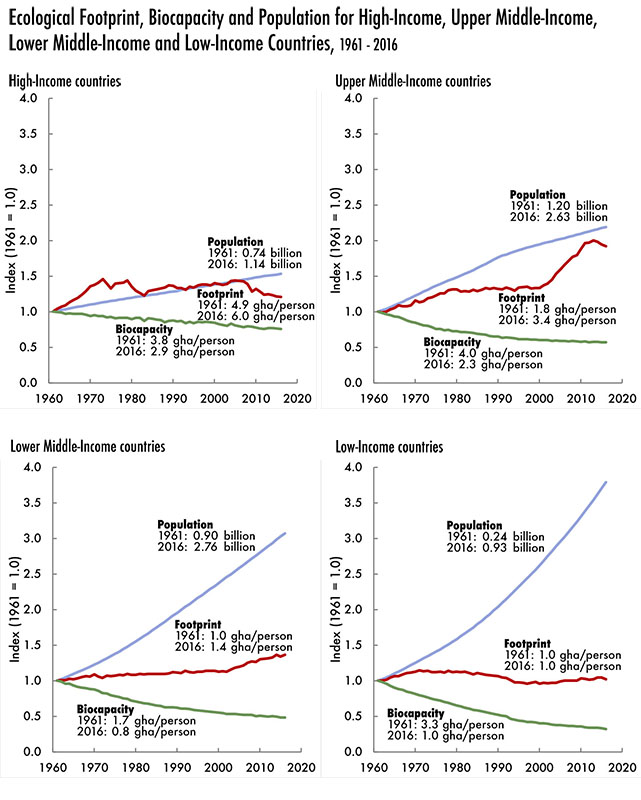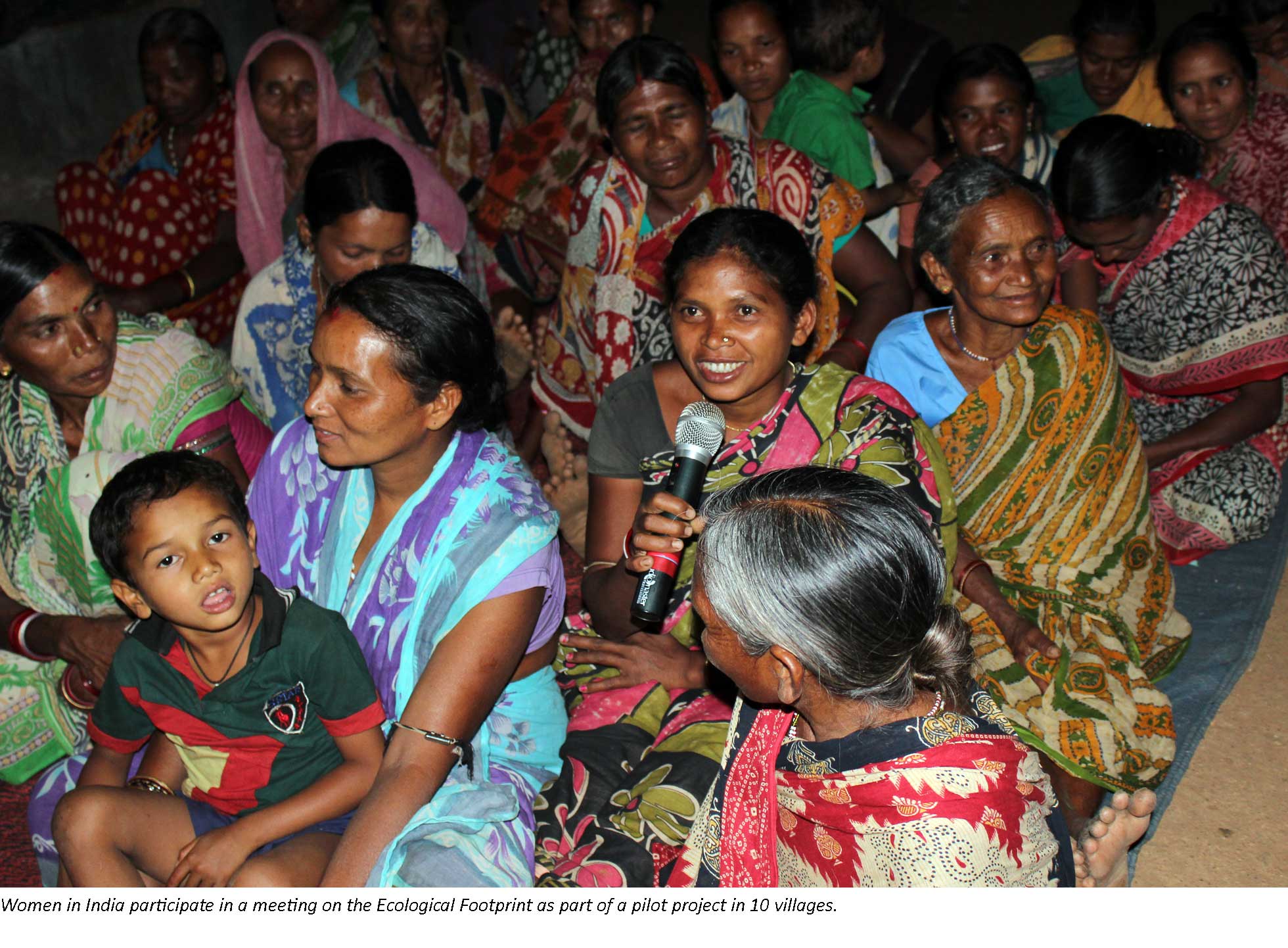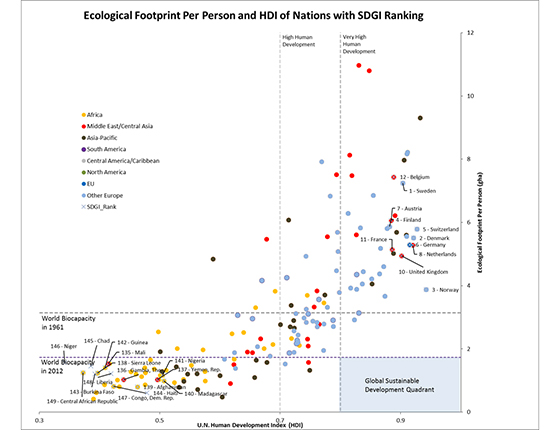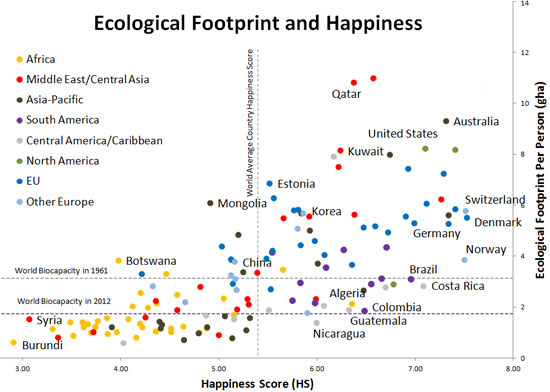As an organization with a vision of a world that works for everyone and our planet, we believe that empowering women is one of the most important things we can do in service of global sustainability because it yields huge benefits not only for children and families, but also for the world as a whole.
“When women have the opportunity to participate as equals, lower reproductive rates invariably ensue,” says Global Footprint Network Co-Founder Susan Burns. “The reason this is so important is that we cannot ignore population growth if we are truly committed to people having secure lives in a world of finite resources.”
A common notion is that high population growth rates among low-income people are not a problem for sustainability, because low-income people use fewer resources. However, our data show that low-income countries with high population growth typically have declining per person Ecological Footprints as a result of inadequate access to resources (see graph below). It is a sign of tragedy, not sustainability. These are often populations who need larger Footprints in order to secure decent lives for themselves. Without the financial means to secure the biocapacity required to meet the needs of a growing population, people are left with no options but sharing smaller and smaller portions of limited resources.
The graph below shows the relative growth of per person Ecological Footprint, per person biocapacity and population:

A staggering 71 percent of the world population now lives in countries with this double challenge: biocapacity deficits AND lower-than-world-average income, up from less than 15 percent in the early 1960s.
Everyone has the right to decent living conditions. Hence the crucial importance of investing in women’s education and family planning to stabilize or even gradually reduce world population, bringing sustainable solutions within reach.
The link between women’s increased access to education and professional opportunities, and declining fertility rate, has been demonstrated time and time again. A lower fertility rate is invariably associated with higher standards of living and better outcomes for her children, enabled by the improved ability of a woman to exert control over her childbearing.
Non-coercive approaches to lower birth rates have yielded impressive results. For example in Thailand, one farsighted doctor broke the taboo of the condom. Or consider Ethiopia, South Korea and Iran, with a decline of 35 percent, 39 percent and 50 percent of their respective birth rates between 1990 and 2010.
Birth rates are highly affected by social, cultural, and economic factors, which public policies can radically shape. Between 1993 and 2006, for example, Iranian couples were required to take a family-planning class in order to receive their marriage license. The low-fertility revolution introduced by the new government in the late 1990s after the Iraq war was meant to address the issues of the country’s limited capacity to provide adequate food, education, housing, and employment.
“It is more difficult for low-income populations around the world to deal with shrinking resources, even though they have a smaller Footprint. If we want a world that works for everyone, we need to make sure we have the appropriate resources to support that,” states Burns. “Healthy and smaller families are obviously core to the success of this approach, with a view to ensuring that each child born into this world is given opportunities in terms of education, employment, and a decent quality of life.”






